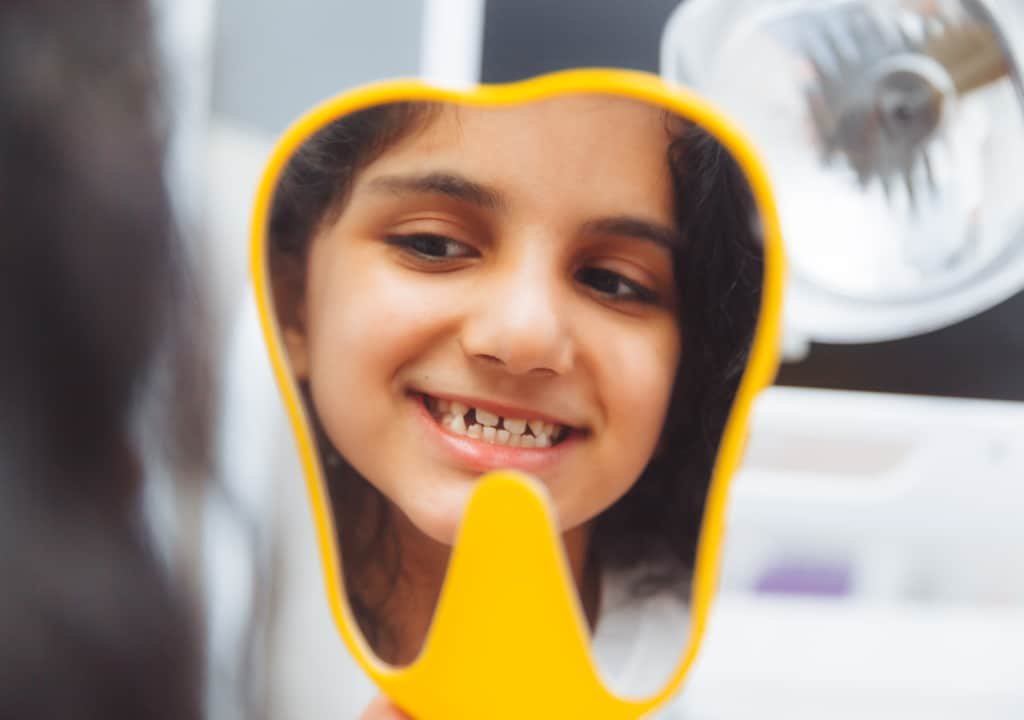Blog
Early Childhood Caries
Introduction:
We have compiled this article on “Early Childhood Caries“. The reference links are at the bottom of the article.
[1]Dental caries (decay) is an international public health challenge, especially among young children. Early childhood caries (ECC) is a serious public health problem in both developing and industrialized countries. ECC can begin early in life, progresses rapidly in those who are at high risk, and often goes untreated. Its consequences can affect the immediate and long-term quality of life of the child’s family and can have significant social and economic consequences beyond the immediate family as well.
ECC can be a particularly virulent form of caries, beginning soon after the dental eruption, developing on smooth surfaces, progressing rapidly, and having a lasting detrimental impact on dentition.
Children experiencing caries as infants or toddlers have a much greater probability of subsequent caries in both the primary and permanent dentitions. The relationship between breastfeeding and ECC is likely to be complex and confounded by many biological variables, such as mutants streptococci, enamel hypoplasia, and intake of sugars, as well as social variables, such as parental education and socioeconomic status, which may affect oral health.
Unlike other infectious diseases, tooth decay is not self-limiting. Decayed teeth require professional treatment to remove infection and restore tooth function. In this review, we give detailed information about ECC, from its diagnosis to its management.
Dental caries is the most common chronic infectious disease of childhood, caused by the interaction of bacteria, mainly Streptococcus mutans, and sugary foods on tooth enamel. S. mutans can spread from mother to baby during infancy and can inoculate even pre-dentate infants. These bacteria break down sugars for energy, causing an acidic environment in the mouth and resulting in demineralization of the enamel of the teeth and dental caries. Early childhood caries (ECC) is a serious public health problem in both developing and industrialized countries.
ECC can begin early in life, progresses rapidly in those who are at high risk, and often goes untreated.Its consequences can affect the immediate and long-term quality of life of the child and family, and can have significant social and economic consequences beyond the immediate family as well.
[2]ECC which is considered as a significant health issue reported among young children, may be associated with other health conditions, ranging from local pain, abscesses, to more severe problems leading to difficulty in chewing, malnutrition, and gastrointestinal disorders.
Further, left untreated, ECC may considerably influence the child quality of life, his self-esteem, his socializing and learning abilities.
To optimize the chances of young children to stay free of early dental caries, it is mandatory to initiate preventive programs soon or after primary tooth eruption.
[3]Epidemiology Of Ecc
World Health Organization (WHO) mentioned that ECC is a highly prevalent global disease public health problem. The American Dental Association identified that ECC was found throughout the general child population, and was a significant public health problem in deprived communities.
Firstly, the prevalence and incidence of ECC is very high, it is an early-onset, aggressive form of dental caries that affected around 1.76 billion children with primary teeth worldwide. Secondly, although ECC is prevalent around the world, it is, in particular, growing rapidly in low- and middle-income countries. The result of the fourth National Oral Health Survey in the Mainland of China showed that the prevalence of deciduous tooth caries in 5-year-old children was 71.9%, which was 5.9% higher than that of 10 years ago, and the mean dmft (decay, missing, or filled teeth) score was 4.24.
With a combined global ECC prevalence of 48%, the ECC prevalence varied both between and within countries. Ranged from 16 %(Singapore) to 89% (China), the prevalence by continent was 30% in Africa, 48% in the Americas, 52% in Asia, 43% in Europe, and 82% in Oceania, which indicated the distribution of ECC is not homogeneous.
The variation could be explained by mixed factors, such as macro-economic, socioeconomic, genetic factors, ethnic minority populations,the availability of fluoride in drinking water or toothpaste, interventions with evidence of effectiveness for caries prevention, universal health coverage, growth of gross national income,6 high expenditure on health care.
Thirdly, the untreated primary caries remains high. ECC is still a global public health burden, medically, socially, and economically.
Globally, approximately 532 million cases (95% UI, 443 to 622 million) had untreated caries in primary teeth in 2017, and between 1990 and 2017, the percentage change in the number of prevalent cases decreased in high- and upper-middle-income countries and increased in low- and lower-middle-income countries.
A systematic review supported the meta-regression review showed that the prevalence of untreated caries affected 9% of children (95% CI 8.7, 9.4) in 2010 and has remained relatively unchanged for 30 years. Therefore, we face a huge challenge in the prevention and management of ECC.
Conclusion:
Thank you for reading this article, and check back frequently for other dental health articles. Should you have any questions, please contact Apple Tree Dental today!
Article compiled by Apple Tree Dental
Article reference links


